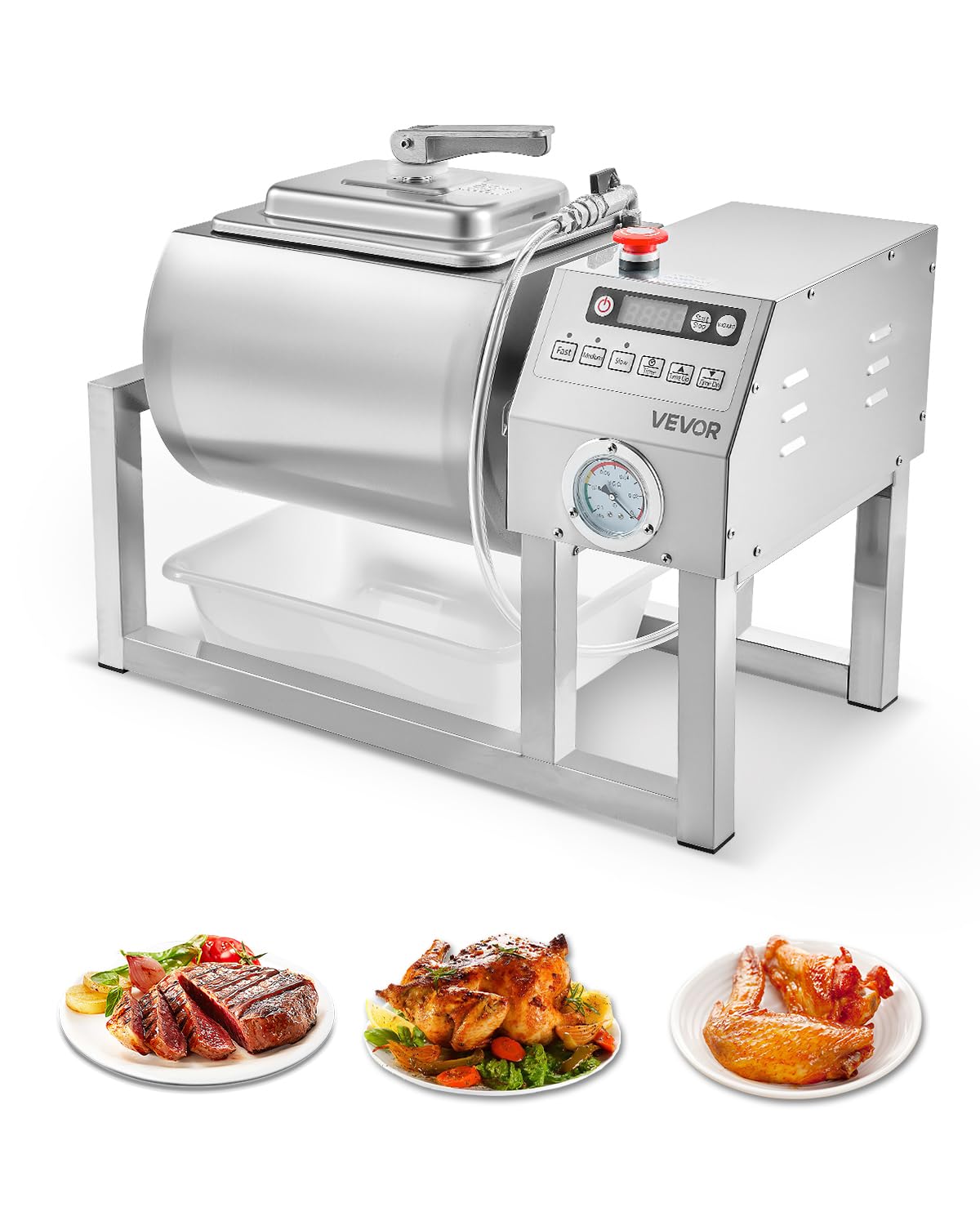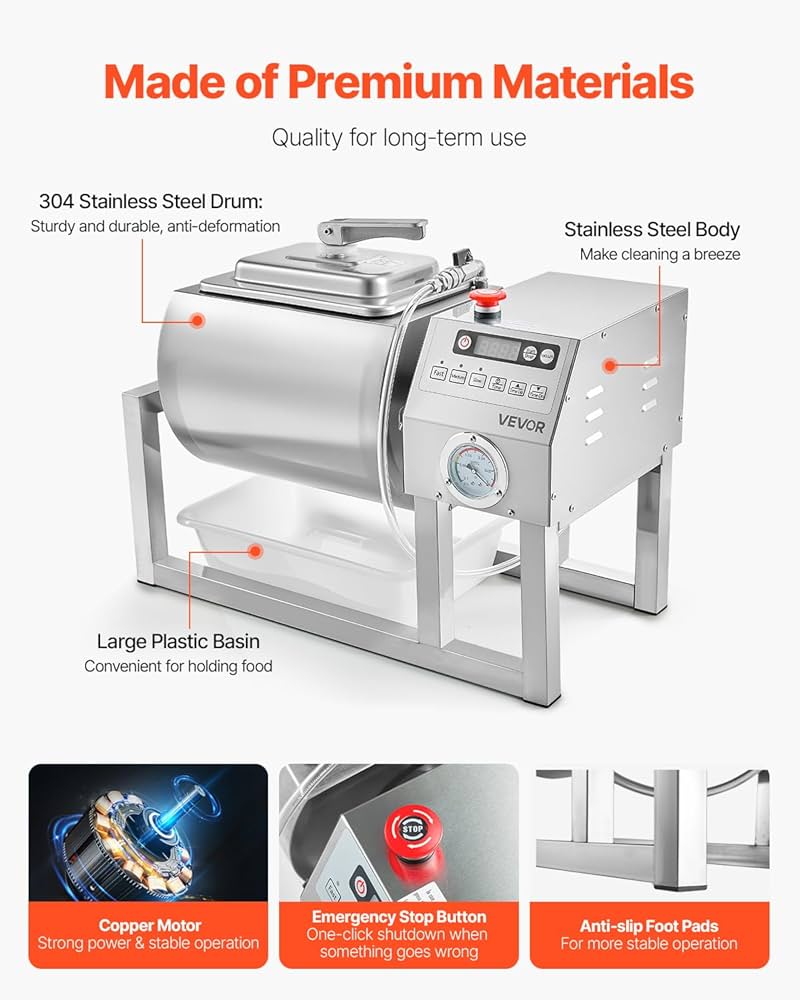10 years of experience as a food machinery equipment manufacturer
10 years of experience as a food machinery equipment manufacturer
In the realm of food preparation, particularly for meats, poultry, and seafood, marination is a crucial step for enhancing flavor, moisture, and tenderness. Traditionally, this process can be time-consuming, often requiring hours or even overnight soaking to achieve desired results. The advent of specialized equipment has sought to optimize this process, and one such innovation is the vacuum tumbler marinator. This device offers a significantly more efficient and effective method for infusing marinades into food products.

A vacuum tumbler marinator combines two primary principles to accelerate the marination process: vacuum technology and mechanical tumbling. Understanding how these elements work in concert is key to appreciating the device’s efficacy.
The Role of Vacuum: When food is placed inside the drum of the marinator and a vacuum is drawn, air is removed from the chamber and, importantly, from within the pores and interstitial spaces of the food product itself. This partial vacuum creates a pressure differential. As air is expelled from the food’s structure, it effectively opens up these spaces. When the vacuum is released, or during the tumbling process under vacuum, the marinade is drawn more readily and deeply into the food to fill these voids, a process far quicker than simple osmosis in a static marination bath.
The Impact of Tumbling: The “tumbler” aspect refers to a rotating drum, often equipped with internal baffles or paddles. As the drum rotates, the food items are gently lifted and dropped. This continuous massaging action serves multiple purposes. Firstly, it ensures that all surfaces of the food are consistently exposed to the marinade. Secondly, the mechanical action helps to break down tougher muscle fibers and connective tissues, further aiding marinade penetration and contributing to a more tender final product. This physical agitation also helps to evenly distribute the marinade throughout the batch.
When combined, the vacuum environment enhances the absorption rate, while the tumbling action ensures even distribution and contributes to tenderization. The food essentially expands slightly under vacuum, allowing marinade to enter, and the tumbling ensures comprehensive coverage and physical conditioning.
The application of vacuum tumbling technology in marination offers several distinct advantages over traditional methods:
While designs can vary, most vacuum tumbler marinators share several fundamental components:
Vacuum tumbler marinators are utilized across a spectrum of food preparation environments:
Home and Small Catering Use: Smaller, countertop models are available for culinary enthusiasts or small-scale caterers who wish to achieve professional marination results quickly. These are ideal for experimenting with flavors and preparing smaller batches of meat, poultry, or even vegetables.
Restaurants and Butcher Shops: Medium-sized units are common in restaurants and butcher shops. They allow chefs and butchers to marinate products efficiently, prepare value-added seasoned meats, and ensure consistent quality for their customers.
Industrial Food Processing: Large-capacity vacuum tumblers are staples in industrial food processing plants. Here, they are used for mass production of marinated products, such as seasoned chicken pieces, deli meats, and other convenience food items. Consistency, yield, and throughput are critical at this scale.

For those considering acquiring a vacuum tumbler marinator, several factors are worth evaluating:
A vacuum tumbler marinator represents a significant advancement in food marination technology. By leveraging the principles of vacuum pressure and mechanical action, it drastically reduces marination times while enhancing flavor absorption, tenderness, and product consistency. Whether for the ambitious home cook, a bustling restaurant kitchen, or a large-scale food processing facility, this equipment offers a more efficient and effective pathway to producing high-quality, flavorful marinated foods. Its ability to improve both the organoleptic qualities of food and the operational efficiency of its preparation makes it a valuable asset in modern culinary practices.
